The Seven Most Classic Pieces of Gear
It's rare for a product to stand the test of time, but these seven items are as good as they ever were
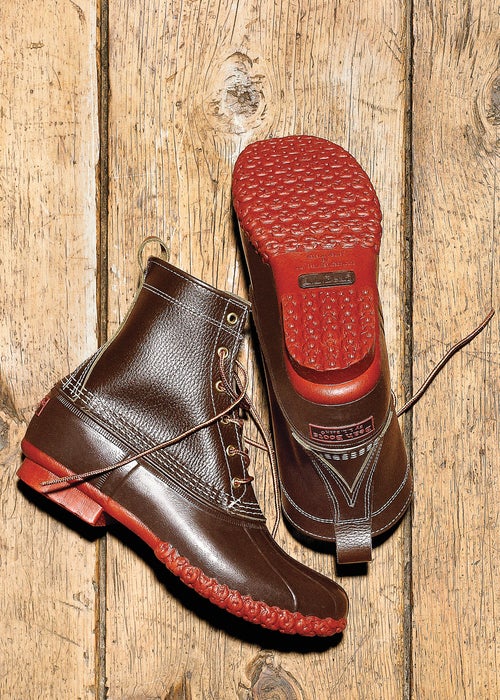
L.L. Bean Maine Hunting Shoes ($149)
Upon his return from a rainy hunting trip in rural Maine in 1911, Leon Leonwood Bean was fed up with his old leaky boots, which did little to prevent his feet from becoming cold and damp. He took to the basement of his brother’s apparel shop and called on a local cobbler to stitch together a hardier boot, combining a comfortable leather upper with a durable, waterproof rubber sole. The first version tended to split at the seams. But Bean had already instituted his now legendary satisfaction-guaranteed policy, and when 90 of the first 100 pairs were returned, he fixed them himself, securing a core of diehard fans.
Though the Bean boot, as it’s affectionately known, was designed to aid hunters during long treks, it soon caught on with urbanites. Hit the streets of Boston or New York City in early spring and you’ll notice young professionals and hardened blue-collar folks alike wearing it. It works great in slush, and the modern build holds up better than its forebears, giving the Bean an ever expanding fan base: at times it’s been on back order for months. The wait is worth it. One pair can last a lifetime. —Mitch Breton
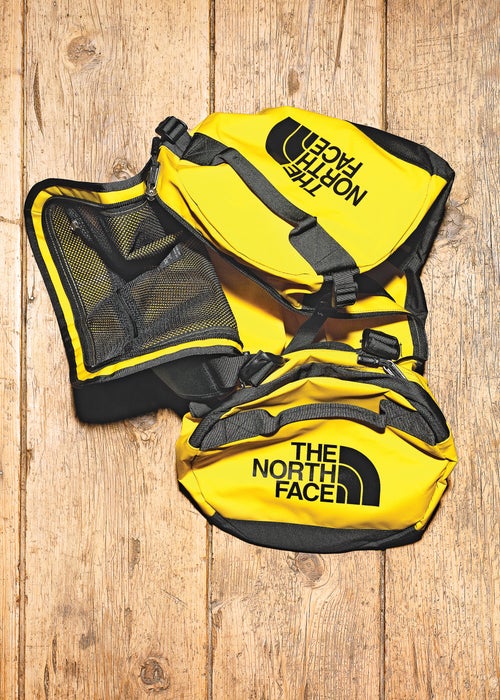
The North Face Base Camp Duffel ($139)
This basic bag is arguably the most enduring North Face product in both popularity and construction. The company first produced it in 1978, and it is beloved by all manner of travelers, from alpinists, who hitch it to their yaks for the long haul to Everest Base Camp, to well-heeled explorers, who strap it atop their rented Peugeots when they’ve overpacked for a ski getaway in Chamonix. In 1990, the North Face changed the name from the plain vanilla Soft Duffel to reflect the fact that it was now the default first-stage gear hauler on many climbing expeditions. Not much else has changed over the years, a testament to the idea that the simplest solution is usually the best one. The massive main compartment swallows 71 liters of stuff, a smaller end pocket holds boots and dirty clothes, and the ballistic nylon tolerates repeated abuse from bovines and baggage handlers. The one trick the Base Camp does have up its sleeve: detachable backpack straps, for when the yak calls it quits. —Will Egensteiner
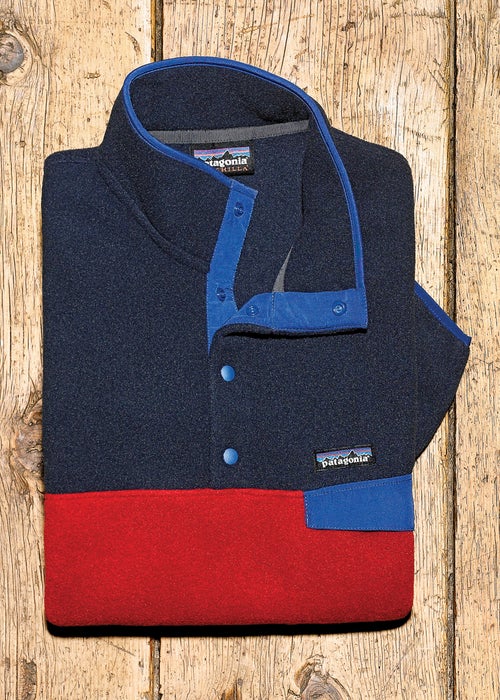
Patagonia Synchilla Snap-T Pullover ($139)
These days fleece is everywhere. One suspects that most readers of this magazine own a fleece layer or six. Helly Hansen pioneered the fabric in the early sixties, but even when Malden Mills (now Polartec) created its own version in its small-town Massachusetts headquarters, wool was still the king of outdoor apparel. Malden collaborated with Patagonia to create the Synchilla Snap-T, released in 1985, and adventurers everywhere swooned. Here was an insulating layer that offered next-to-skin softness but had the wool-like ability to keep the wearer warm even when wet. More and more outdoor brands adopted fleece, and eventually it became the ubiquitous material it is today, used in everything from dog beds to blankets to stuffed animals. Yet the square-cut Snap-T remains part of every outdoor lover’s cold-weather uniform. And, Patagonia being Patagonia, it’s still made from 85 percent recycled water bottles, just like it was back in the eighties. —Ben Fox
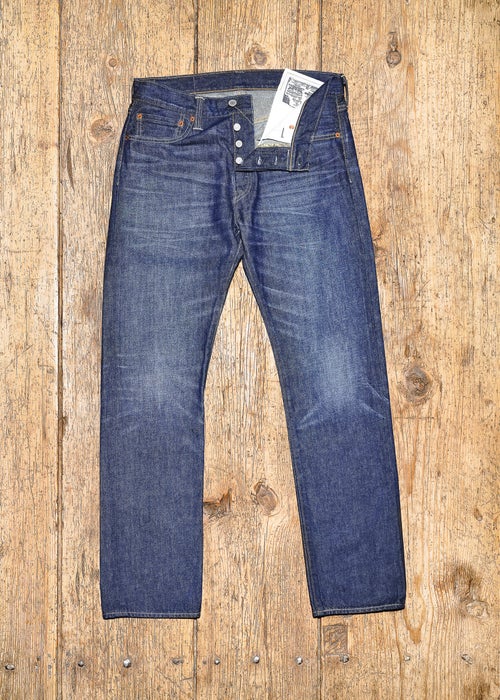
Levi’s 501 Jeans ($60)
There was a time when you couldn’t buy jeans distressed. When they didn’t come in skinny, baggy, or slim-fit varieties. One hundred and forty-four years ago, when Levi Strauss and Jacob Davis patented the world’s first pair of blue jeans—what we now know as the 501—they were called simply “waist overalls.” The riveted denim was intended not for bankers or lawyers, but for rail-yard workers, farmers, lumberjacks, and cowboys. So of course outdoorsy people began wearing them to hike rugged trails and scale rock walls. (Though climbers in the sixties cut their jeans into jorts—a move we don’t endorse.) We still prefer the original, because it remains burly as hell. Just try to wear a pair out. We’ll wait. —Jonah Ogles
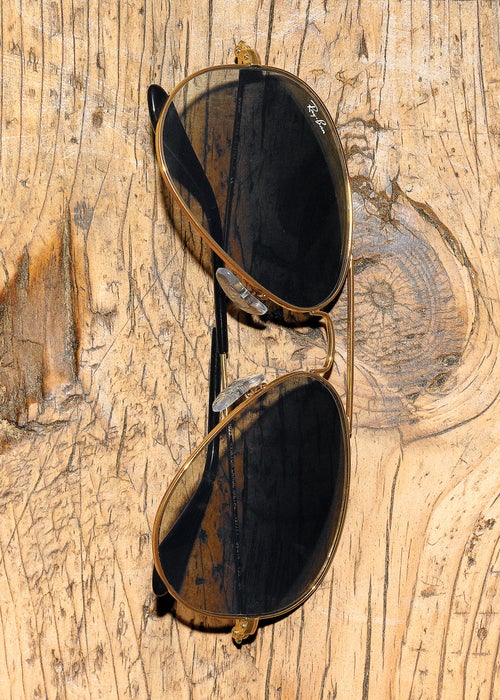
Ray-Ban Aviator Sunglasses ($150)
Don a pair of Aviators and you are instantly transformed into someone else—someone a little cooler, a little more refined. A nomad who has hopped trains across the West with a Jack Kerouac book in their pack. The shades, with their drooping oversize lenses and gleaming wire temples, imbue the wearer with the romance of the open road. How else to explain their lasting popularity? During the golden age of aviation between the two world wars, an Army colonel from California named John A. Macready approached eye-protection behemoth Bausch and Lomb with a simple idea: make sunglasses for pilots, with plastic frames and tough, high-quality green lenses to fight glare and fog. Less than a year later, the shades got metal frames and a consumer-ready rebrand, the Ray-Ban Aviator. Since then the design has spawned dozens of copycats, with almost every eyewear company offering a version. (Ray-Ban itself has eight.) To which we say: right on. No other piece of gear packs so much personality and polish into such a slim package. —Axie Navas
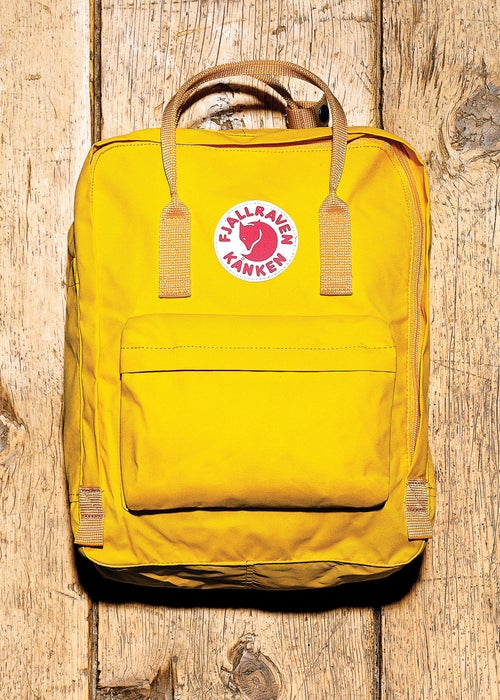
Fjällräven Kanken Pack ($80)
If humanity has gained anything from forcing its young to lug around big, heavy textbooks, it’s the Kanken. Fjällräven released this 16-liter backpack in 1978 to help Swedish children shoulder their homework, and the design has remained virtually unchanged ever since. Credit the utility and bomber construction. The distinctive square silhouette and wide front opening were engineered to handle a full course load, but they’re just as suitable for swallowing gym clothes or a growler and picnic spread. The fabric, Vinylon F, feels like cotton but is lighter (the pack weighs just 10.5 ounces) and better resists abrasion. It’s also inherently weatherproof, no DWR needed, so you can wash it without eroding performance. But what really distinguishes the Kanken is the rainbow of color options—there are about 48, from Ox Red to Alpine Purple and everything in between. No wonder all the cool Swedes carry them. —Aleta Burchyski
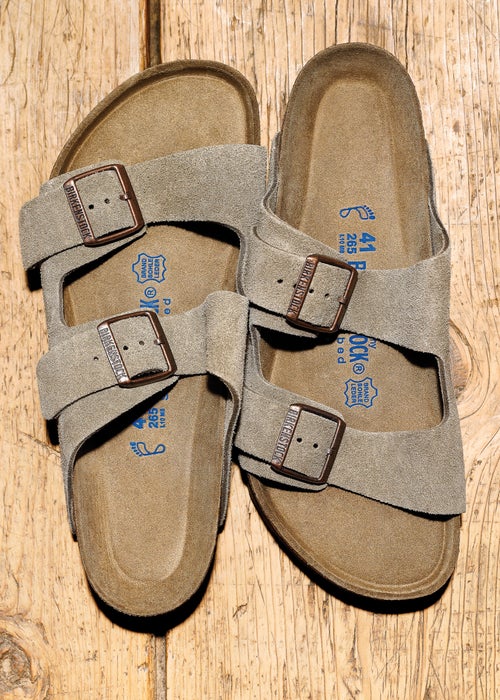
Birkenstock Arizona Sandals ($135)
The Birkenstock brand was born in Germany in 1774 but didn’t make its way to the U.S. until almost 200 years later, when a former dressmaker named Margot Fraser began distributing the now iconic cork-soled leather Arizona sandals to health-food stores. (She’d tried shoe emporiums first, but they weren’t interested.) Designed as a purely functional orthopedic tool, the slip-ons rapidly became a staple of hippie attire. Over the years, their popularity has waxed and waned, with the latest surge occurring in the early 2010s. New colors, shapes, and questionable extras like shearling-lined straps have helped fuel a fashion-industry craze—last June, Birkenstock staged its first runway show at Paris Fashion Week—and the biggest boom in Birks sales to date. Or maybe it’s just that people finally realized that there’s something to be said for sensible shoes after all. —Erin Berger